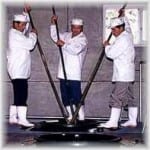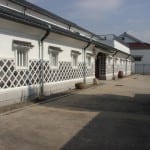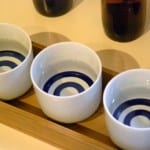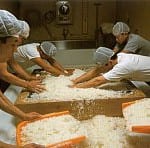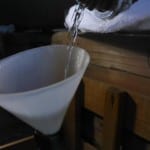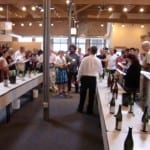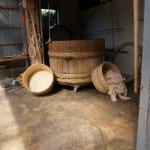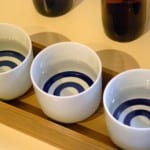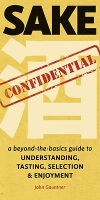2017 National New Sake Compeition Report
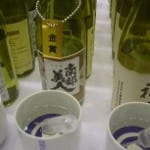 In May, the 105th Zenkoku Shinshu Kanpyoukai was held in Japan. The official English name for this contest is the Japan Sake Awards, but the literal translation is much more descriptive if slightly unwieldy: the National New Sake Tasting Competition. It is the longest running competition of its kind anywhere in the world. Those interested can find more information in the archives of this newsletter (which go back to 1999!), in particular in the June or July editions for each year.
In May, the 105th Zenkoku Shinshu Kanpyoukai was held in Japan. The official English name for this contest is the Japan Sake Awards, but the literal translation is much more descriptive if slightly unwieldy: the National New Sake Tasting Competition. It is the longest running competition of its kind anywhere in the world. Those interested can find more information in the archives of this newsletter (which go back to 1999!), in particular in the June or July editions for each year.
But to save you the hassle, here is a summary of the main points of this prestigious competition.
The sake submitted is not stuff you can normally buy, but rather daiginjo or junmai daiginjo made specifically for this contest. It is brewed to have a minimum of faults, but still seem unique and special. I often refer to it as “daiginjo on steroids.”
This year, 860 of Japan’s 1200 sakagura submitted an entry to the contest. Each company is allowed to submit one sake per brewing license, i.e. one per brewing facility owned. Some big companies own more than one facility so they would be permitted one for each.
Almost all of it is not junmai because using the added-alcohol step brings out more aromas and flavors. But this year, 156 of the 860 submissions were junmai, up from 139 a year ago. Clearly more brewers are interested in trying to win with junmai sake.
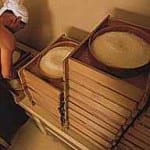
Koji being cultivated in small trays
Sake is tasted blind in round one, and about half (this year, 437 to be exact) make it to round two. They are then tasted blind again, and about half (this year, 242 to be exact) of these will be designated as gold, the rest that made it into the second round are designated as prize-winners (the term “silver” is not used, although the gist is the same).
This year, 242 won gold, and 215 won silver. While prestigious within the sake industry, it is not that commonly used in marketing as the average consumer has no idea this contest even exists.
For the seventh time in eleven years, and fifth in a row, Fukushima Prefecture won more golds than any other prefecture, and as has been the case for the past decade, the entire Tohoku region did very, very well. In fact, much more interesting than Fukushima – with all due respect to their accomplishments – was Miyagi, where 20 sake out of the 23 total submitted got gold! Two more got silver as well. This was an unprecedented result.
This year, brewers were whining that the Yamada Nishiki rice that is most commonly used for contest sake like this was not dissolving easily in the fermenting mash. This means tight flavor profiles with little flavor expressed. But this proved to not be too much of a problem, although flavor profiles seemed to vary quite a bit from region to region.
Much winning sake was on the sweet side, with extra glucose to balance out bitterness contributed by yeasts that give fruity aromas. This seemed especially true in Fukushima, and only slightly less so in Miyagi.
While the sake submitted is not usually sake desitned for the market, the flavors, aromas, styles and leading prefectures are a harbinger of where sake is currently headed. Therein lies the contest’s appeal.
There is so much to be said about this competition: the changes over the years, the remarkably-few-yet-still-there-to-some-degree politics, the history, the records, the reasons it came to be. Much of that can be dug up in the archives of this newsletter, (see the end of the newsletter for more on that) but more importantly it seems as though amidst today’s sake popularity, more brewers and consumers as well are showing an interest in this historically and culturally significant competition.
You can see the results in Japanese here and in English here .
~~~~~~~~~~~~~~~~~~~~~~~~~~~~~~~~~~~~~~
Sake Professional Course in Denver, Colorado
August 28-30, 2017
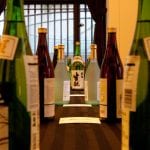 From Monday August 28 to Wednesday August 30, 2017, I will hold the 27th North American running of the Sake Professional Course at the University of Denver, (Fritz Knoebel School of Hospitality, Daniels College of Business) in Denver, Colorado. The content of this intensive sake course will be identical to that of the Sake Professional Course held each January in Japan, with the exception of visiting sake breweries.
From Monday August 28 to Wednesday August 30, 2017, I will hold the 27th North American running of the Sake Professional Course at the University of Denver, (Fritz Knoebel School of Hospitality, Daniels College of Business) in Denver, Colorado. The content of this intensive sake course will be identical to that of the Sake Professional Course held each January in Japan, with the exception of visiting sake breweries.
The course is recognized by the Sake Education Council, and those that complete it will be qualified to take the exam for Certified Sake Specialist, which will be offered on the evening of the last day of the course.
You can learn more about the course here, see the daily syllabus here,and download a pdf here. If you are interested in being in the mailing list for direct course announcements, please send me an email to that purport.
Testimonials from past graduates can be perused here as well.





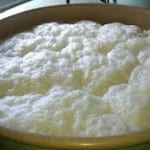

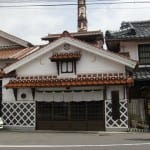

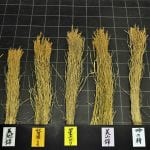
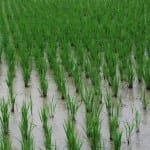
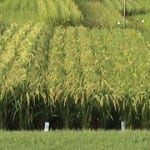
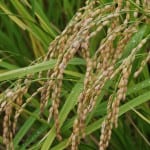 In the April issue of blog, archived
In the April issue of blog, archived 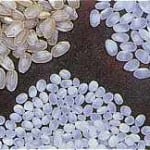 Before launching into its history and roots, let’s quickly review why it is significantly easier to make good sake using Yamada Nishiki. The grains are large, which means more potential for fermentable starch inside. The starches are concentrated in a ball of starch in the middle, and well centered, meaning it is easy to mill the outer fat and protein away, revealing only the starch. And, that protein and fat are at low levels to begin with, lowering the potential for off-flavors.
Before launching into its history and roots, let’s quickly review why it is significantly easier to make good sake using Yamada Nishiki. The grains are large, which means more potential for fermentable starch inside. The starches are concentrated in a ball of starch in the middle, and well centered, meaning it is easy to mill the outer fat and protein away, revealing only the starch. And, that protein and fat are at low levels to begin with, lowering the potential for off-flavors.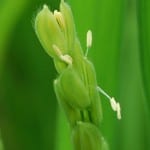 But after that change, tax was due in money based on the amount of land they owned. This means that all of a sudden rice was a commodity, a product to be sold on the marketplace that would lead to revenue to pay such taxes and cover living expenses and savings. As such, the more one grew the more one made, and farmers were all of a sudden very motivated to maximize yields and to do that by growing high-yield rice varieties. Sake rice varieties are decidedly not that kind of rice. So, even though demand for rice was increasing, the production of sake rice with its low yields began do prodigiously drop.
But after that change, tax was due in money based on the amount of land they owned. This means that all of a sudden rice was a commodity, a product to be sold on the marketplace that would lead to revenue to pay such taxes and cover living expenses and savings. As such, the more one grew the more one made, and farmers were all of a sudden very motivated to maximize yields and to do that by growing high-yield rice varieties. Sake rice varieties are decidedly not that kind of rice. So, even though demand for rice was increasing, the production of sake rice with its low yields began do prodigiously drop.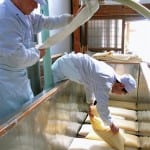 More information about the course, the schedule, the syllabus and the fun is available
More information about the course, the schedule, the syllabus and the fun is available 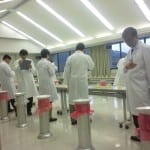 The government in Japan, in particular the National Tax Administration, monitors trends in sake preferences amongst consumers, as expressed by trends in sake production. The results of the analysis of data from last year’s sake was released a short while ago. While it is nothing shocking, it is interesting to see how things change. Here are a couple of tendencies culled from that slurry of data.
The government in Japan, in particular the National Tax Administration, monitors trends in sake preferences amongst consumers, as expressed by trends in sake production. The results of the analysis of data from last year’s sake was released a short while ago. While it is nothing shocking, it is interesting to see how things change. Here are a couple of tendencies culled from that slurry of data.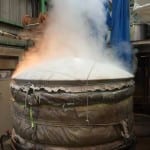 Again, hardly surprising, but the level of the ester ethyl caproate, which leads to aromas like ripe apple, tropical fruit and licorice or anise, has been on the increase. Curse it. This is hardly surprising considering that ginjo and daiginjo continue to grow very strongly in popularity.
Again, hardly surprising, but the level of the ester ethyl caproate, which leads to aromas like ripe apple, tropical fruit and licorice or anise, has been on the increase. Curse it. This is hardly surprising considering that ginjo and daiginjo continue to grow very strongly in popularity.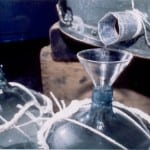 Non-premium sake has seen a decrease in alcohol content overall. Ginjo et cetera has seen alcohol levels stay fairly high, likely for increased impact, but in non-premium futsuu-shu alcohol has dropped a bit on the average. I am not sure what the significance of this point is, though, nor was it elucidated upon in the government report.
Non-premium sake has seen a decrease in alcohol content overall. Ginjo et cetera has seen alcohol levels stay fairly high, likely for increased impact, but in non-premium futsuu-shu alcohol has dropped a bit on the average. I am not sure what the significance of this point is, though, nor was it elucidated upon in the government report. In a previous post, we began talking about the “flavor elements of sake,” i.e. what things – ingredients, methods and “after-care” – combine in various ways to make the sake before you taste and smell the way it does. And last month we looked at the main ingredients and their contributions. Rice, water, yeast and koji all play their roles, and those roles are intertwined. If you missed that, you can check it out
In a previous post, we began talking about the “flavor elements of sake,” i.e. what things – ingredients, methods and “after-care” – combine in various ways to make the sake before you taste and smell the way it does. And last month we looked at the main ingredients and their contributions. Rice, water, yeast and koji all play their roles, and those roles are intertwined. If you missed that, you can check it out 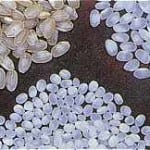 Milling
Milling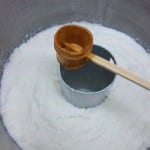 This section could be expanded to fill several books, at least. But since we do not have that luxury now, let us break it down a bit. There are three main ways of preparing the yeast starter, a few less mainstream but very valid ways, and tons of variations beyond that.
This section could be expanded to fill several books, at least. But since we do not have that luxury now, let us break it down a bit. There are three main ways of preparing the yeast starter, a few less mainstream but very valid ways, and tons of variations beyond that.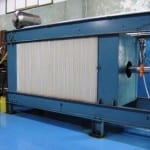 Machine press
Machine press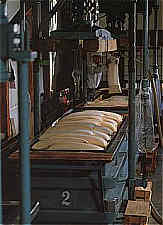 Fune (box press)
Fune (box press)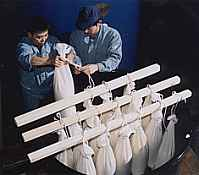 Shizuku
Shizuku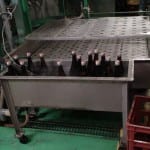 Pasteurization
Pasteurization Aging
Aging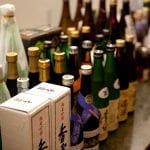 Fond of doing things at the last minute? Then check out the Sake Professional Course to be held in Toronto October 3, 4 and 5. Learn more
Fond of doing things at the last minute? Then check out the Sake Professional Course to be held in Toronto October 3, 4 and 5. Learn more  (Actually, since those are the extent of sake’s ingredients, that ain’t really narrowing it down, but you know…) And let us consider the following steps as the brewing methods that affect the nature of the sake: milling, yeast starter methods, pressing methods, pasteurization, whether or not alcohol has been added (i.e. whether or not it is a junmai style) and aging.
(Actually, since those are the extent of sake’s ingredients, that ain’t really narrowing it down, but you know…) And let us consider the following steps as the brewing methods that affect the nature of the sake: milling, yeast starter methods, pressing methods, pasteurization, whether or not alcohol has been added (i.e. whether or not it is a junmai style) and aging.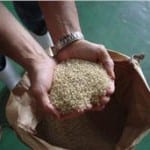 I. Rice = Flavor
I. Rice = Flavor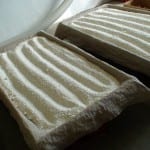 Koji provides enzymes that convert starch to sugar. Just how strong those enzymes are, and at what stage of the brewing process they are most active, will determine how sweet or dry the sake is. If the koji leads to lots of starch-to-sugar conversion early on, that sugar will be readily converted to alcohol leading to a dry sake. If sugar comes along later in the process when the yeast is petering out, it will remain in the sake and lead to sweetness. In truth, this too is more complicated. But therein lies the gist.
Koji provides enzymes that convert starch to sugar. Just how strong those enzymes are, and at what stage of the brewing process they are most active, will determine how sweet or dry the sake is. If the koji leads to lots of starch-to-sugar conversion early on, that sugar will be readily converted to alcohol leading to a dry sake. If sugar comes along later in the process when the yeast is petering out, it will remain in the sake and lead to sweetness. In truth, this too is more complicated. But therein lies the gist.